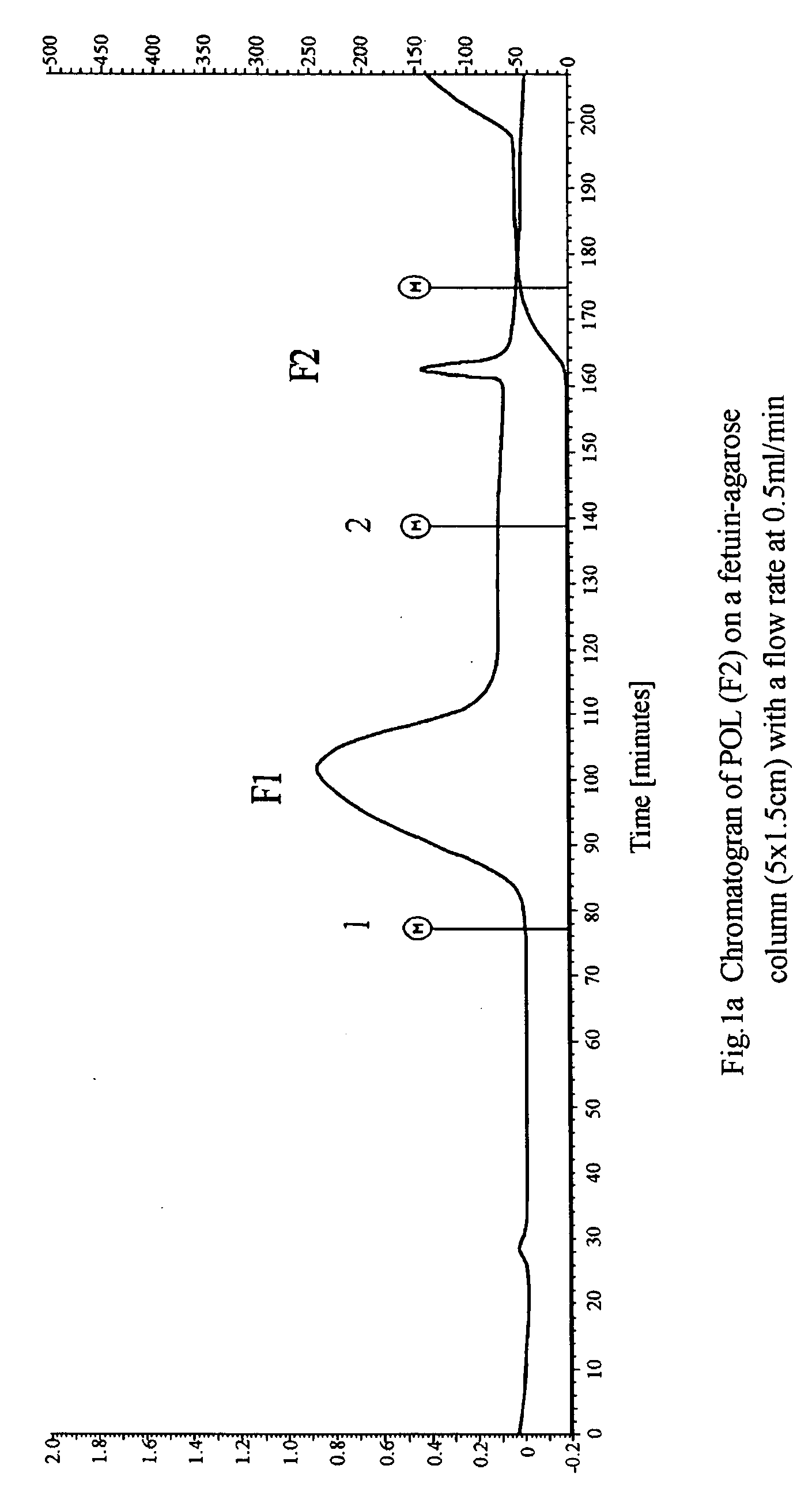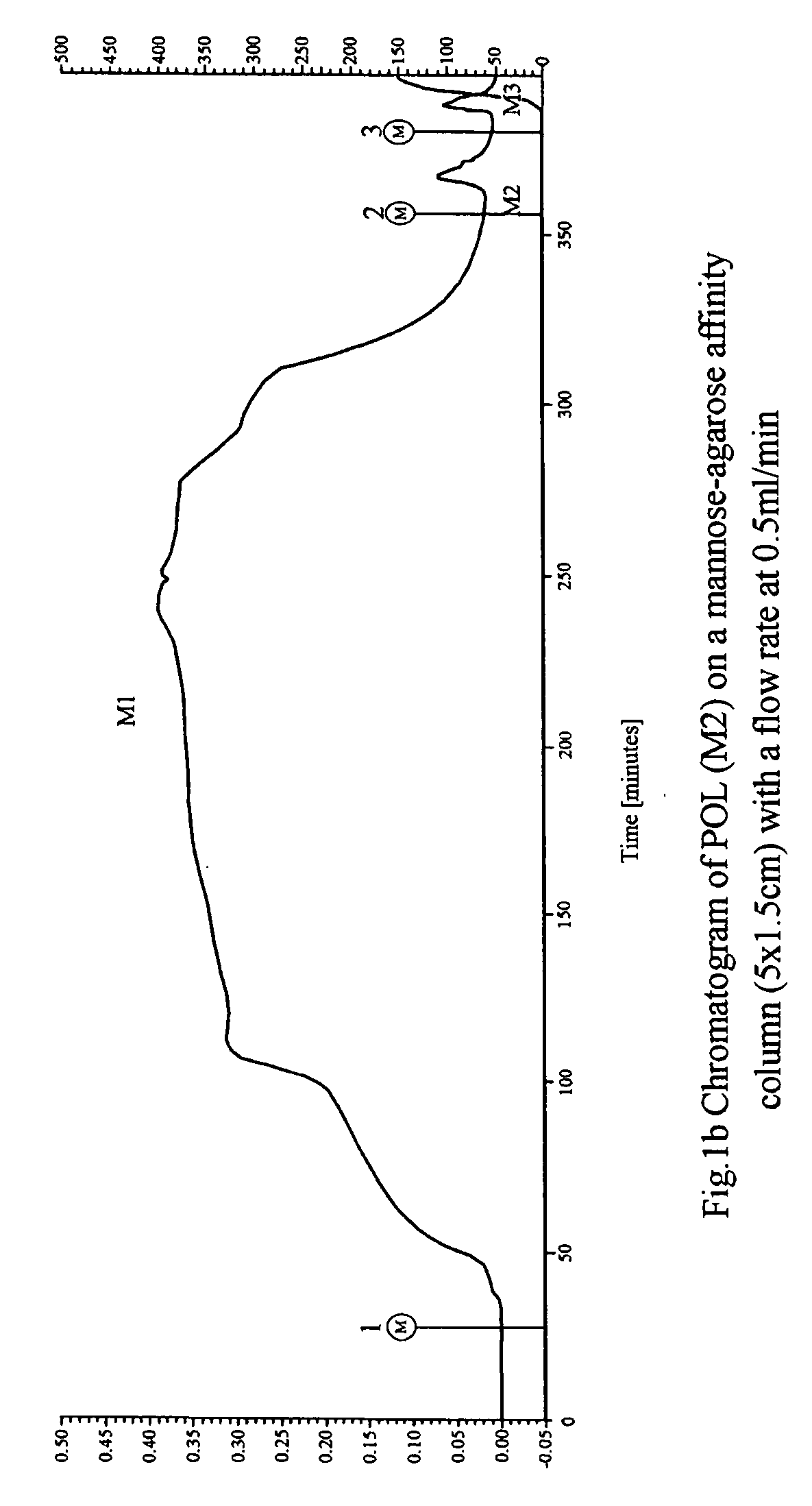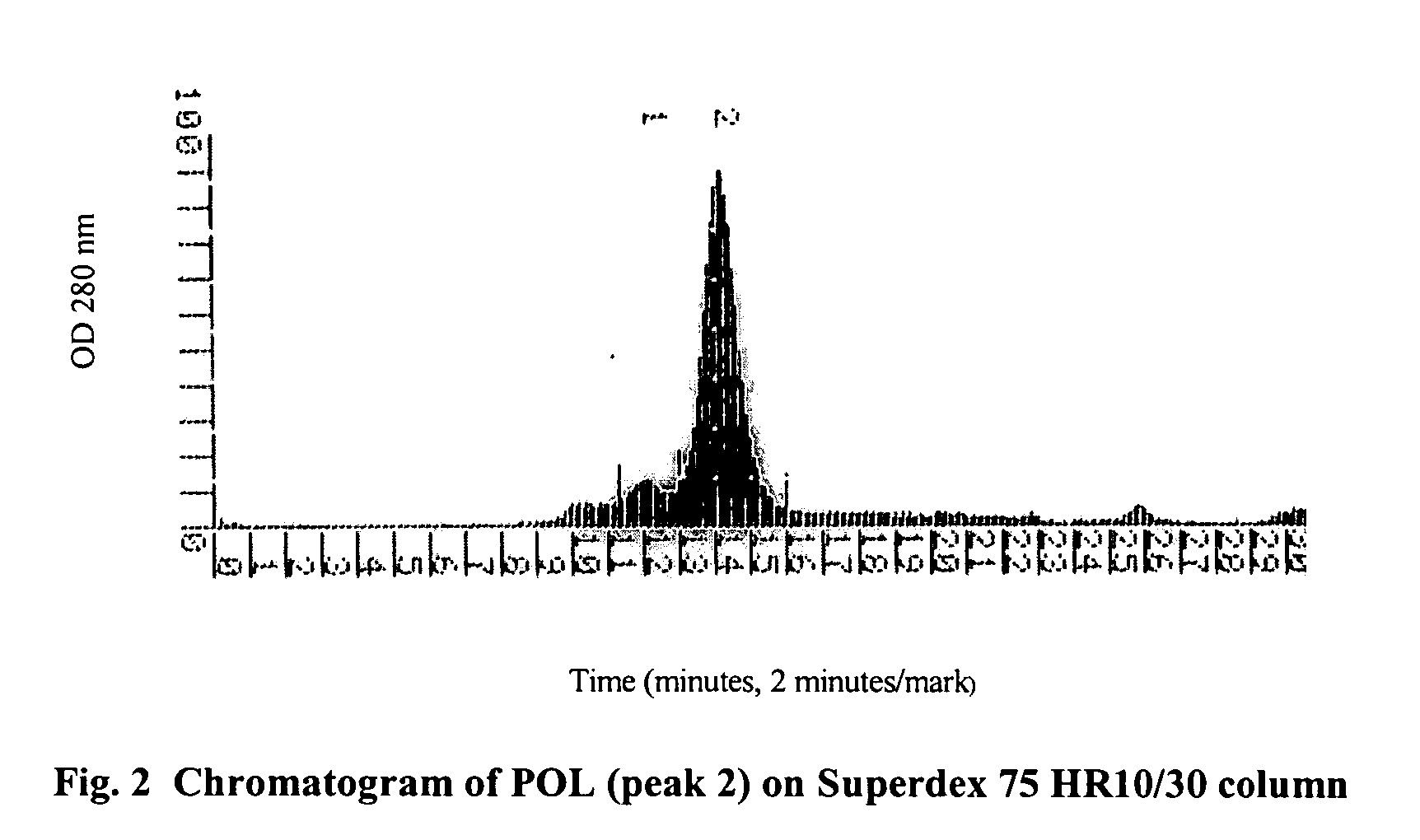Isolated proteins from a traditional Chinese medicine Yuzhu and use thereof
a technology of protein and traditional chinese medicine, which is applied in the field of extract of plants, can solve the problem of providing no data on the function of proteins, and achieve the effect of potent protein bioactivities
- Summary
- Abstract
- Description
- Claims
- Application Information
AI Technical Summary
Benefits of technology
Problems solved by technology
Method used
Image
Examples
example 1
Isolation of Bioactive Proteins
I. Crude Extract (Protein) of Yuzhu
[0095] A sliced and dried material (250 g) of Yuzhu, Polygonatum odoratum (from Quangzhou, Quangdong, China) was homogenized with a 0.2M NaCl aqueous solution (2 ml / g). To the resulting supernatant was added slowly ammonium sulfate [(NH4)2SO4, 561 g per liter] to make 80% saturation, and the resultant precipitate was collected. The precipitate was then dissolved in distilled water and the resultant solution was dialyzed extensively against distilled water of ten-time volume of the solution on the top of a magnetic stirrer at 4° C. for three cycles, at four hours per cycle where fresh distilled water was changed. The resultant clear supernatant was lyophilized to yield a crude protein powder (about 1.9 g).
II. Isolated with Fetuin Agarose Columns
[0096] For the best result, a crude protein powder (25 mg) as prepared in the above Part I was dissolved in 45 mM tris buffer (pH8.0) (25 ml) in such a way that the protei...
example 2
Determination of Molecular Weight of Target Protein
I. By Gel Filtration (size exclusion)
[0100] Isolated compounds prepared in Example 1 were further purified on a Superdex 75 HR 10 / 30 column (Pharmacia Biotech) on an FPLC system, which was pre-equilibrated with ammonium bicarbonate buffer (100 mM, pH8) and calibrated with standard molecular markers (Sigma) including bovine serum albumin, carbonic anhydrase, cytochrome C, aprotinin and cytidine. The molecular weight of unknown was deduced from a standard curve constructed by the molecular weights (in log scale) and relative retention times on the column of the standards. A pure protein at a retention time of 29.02±0.74 min (Mean±S.D, n=12), as shown in FIG. 2, was collected and designated as POL. The molecular weight of POL appeared to be 28 kDA. The yield of POL was summarized in Tables 1a, 1b, and 1c.
II. By SDS-PAGE (Sodium Dodecyl Sulfate Polyacrylamide Gel Electrophoresis)
[0101] Sodium dodecyl sulfate polyacrylamide gel ele...
example 3
Analysis of N-Termination Amino Acid Sequence
[0103] POL separated on gel in Example 2 was blotted onto a polyvinylidene difluoride membrane (PVDF) in a modified Dunn's Buffer (consisted of 10 mM NaHCO3, 3 mM Na2CO3, pH9.9, with 0.02% SDS) at a constant voltage (30V) in a mini trans-blot cell (Bio-Rad) for 1½ h at 4° C. The 14 kDa subunit was cut out and analyzed by an HP G1000A Edman degradation unit and an HP-1000 HPLC system.
[0104] Table 2 shows the N-terminal amino acid sequences of POL compared to some other monocot mannose-binding lectins in Families Alliaceae, Amaryllidaceae and Liliaceae wherein 1ATL, Allium tuberosum lectin (Ooi et al., 2002); 2ASA I, Allium sativum agglutinin domain I (VanDamme et al., 1992); 3ACA, Allium cepa agglutinin (VanDamme et al., 1995); 4GNA, Galanthus nivalis agglutinin (VanDamme et al., 1991); 5 NTL, Narcissus tazettalectin (Ooi et al., 2000); 6AAA, Aloe arborescens agglutinin (Koike et al., 1995); 7.POL, Polygonatum odoratum lectin, in the pre...
PUM
| Property | Measurement | Unit |
|---|---|---|
| Time | aaaaa | aaaaa |
| Atomic weight | aaaaa | aaaaa |
| Atomic weight | aaaaa | aaaaa |
Abstract
Description
Claims
Application Information
 Login to View More
Login to View More - R&D
- Intellectual Property
- Life Sciences
- Materials
- Tech Scout
- Unparalleled Data Quality
- Higher Quality Content
- 60% Fewer Hallucinations
Browse by: Latest US Patents, China's latest patents, Technical Efficacy Thesaurus, Application Domain, Technology Topic, Popular Technical Reports.
© 2025 PatSnap. All rights reserved.Legal|Privacy policy|Modern Slavery Act Transparency Statement|Sitemap|About US| Contact US: help@patsnap.com



